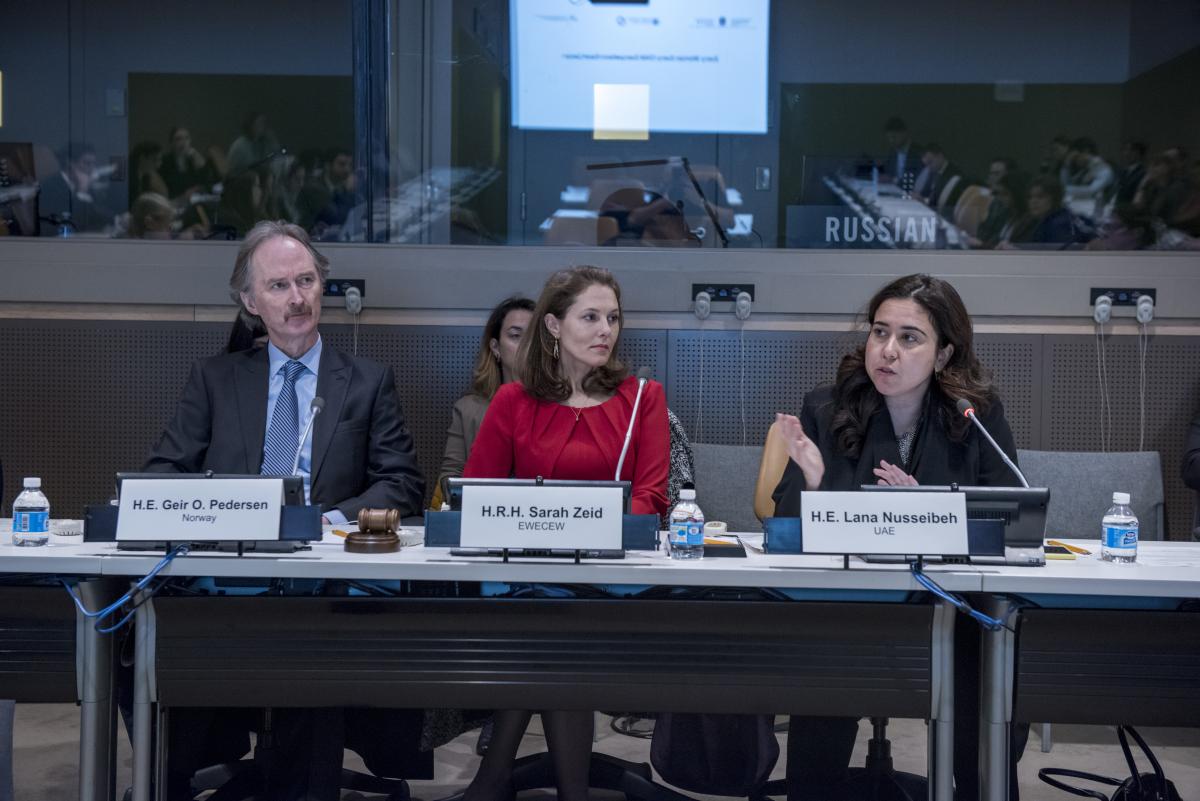
Your Excellencies, colleagues,
Thank you so much for joining us. This morning marks the third panel in the Every Woman Every Child Everywhere series. Inspired by the leadership of Her Royal Highness Princess Sarah Zeid as co-chair of Every Woman Every Child Everywhere, the series is jointly organized by Norway and the UAE to turn the spotlight to the humanitarian dimension of women’s, adolescents’, and children’s health.
We look forward to an extremely interesting and timely conversation today – what the UAE and Norway hope can be a frank exchange on the rapidly growing nexus between climate change, humanitarian crisis, health, and gender. Climate-induced humanitarian situations – from hurricanes to drought-driven malnutrition and insecurity to disease – now affect an estimated 26 million people, the majority of them women, adolescents, and children.
As an incremental process, climate change can seem and remote. However, we need only to look to the last 12 months to see what it means for people at the frontline: El Niño related famine threats in East Africa, devastating floods in Bangladesh, drought-linked violence around Lake Chad, and the spread of the Zika virus. Difficult challenges are being exacerbated, and more crises are occurring, now also in unexpected places and at untraditional times.
On the other hand, the conversation about how to integrate the climate, humanitarian, health, and gender agendas is in its early stages – a discrepancy we must resolve as quickly as possible.
To do so, we must ask questions like:
- Do current planning and response to climate-induced humanitarian situations include adequate provisions for the health of women, adolescents, and children?
- Internally within development and humanitarian organizations, how can we ensure that the climate, health, and gender experts speak to one another and co-design programs? How do we allocate budgets to encourage joint programming?
- Should climate finance contribute to humanitarian relief?
We are honored to have a highly distinguished and diverse panel today to guide us through the complexity of the nexus, bringing perspectives from fields as varied as epidemiology, agriculture, weather, and finance. And we are fortunate to have Princess Sarah in the moderator’s seat, with her charming propensity for hard-hitting questions.
To put the conversation in a broader context, crisis situations affect around 2-3 percent of the global population but account for a highly disproportionate number of deaths among women and the young. Conservative estimates put that disproportion at 800 percent, with other estimates as high as 3000 percent, creating an alarming range of 15 to 60 percent of global deaths. Climate is now part of this equation, and one of the drivers for a shift we – national governments, the UN, bilateral donors, humanitarian and development organizations – must make in our programming to reflect that a critical share of our constituency of women, adolescents, and children is in the places that are the most challenging to reach – the areas of conflict, disaster, non-functioning government, physical isolation, and/or extreme poverty.
But there is not one sole way to approach this challenge, or even a universal set of circumstances and drivers creating it. With the panel series, which continues to the General Assembly in September, we are aiming to look across the full spectrum of crisis settings and solutions. In order to identify the reforms that ensure that we can reach every woman and every child everywhere. We will then later this year take these inputs to the annual meeting of Every Woman Every Child Everywhere in Abu Dhabi. There, over 40 of the largest and most innovative humanitarian and development organizations will debate what they must change to collectively go that last mile.
Climate change will figure largely in this year’s discourse, and I am accordingly very keen to hear today’s discussions and ideas, particularly where they can outline commitments that humanitarian and development actors can consider making this year.
Before I hand over to Ambassador Pedersen, I want to flag what could be called the “elephant in the room.” For all the changes we must make in the way we plan for and respond to the health of women and the young in climate-induced humanitarian situations, the most effective long-term solution to stop their suffering is to stop greenhouse gas emissions. It is a fact not lost on either the UAE or Norway as major hydrocarbon exporters, and part of an existential conversation happening at home. In the UAE, we are very proud that “post-oil” is one of our leadership’s favorite adjectives, and that last month we announced a national energy strategy to reduce greenhouse gas emissions by 70 percent by 2050. We recognize too that further ambition on mitigation will be required.
But while countries pursue decarbonization, we are already faced today with not only very tangible crises linked to climate change, but a dawning sense that the goalposts are going to be constantly moved. We must adapt to the new reality of climate change in our programming, and ensure that when we talk about it – and crisis, gender, and age – that we are talking about them together.
Thank you.
